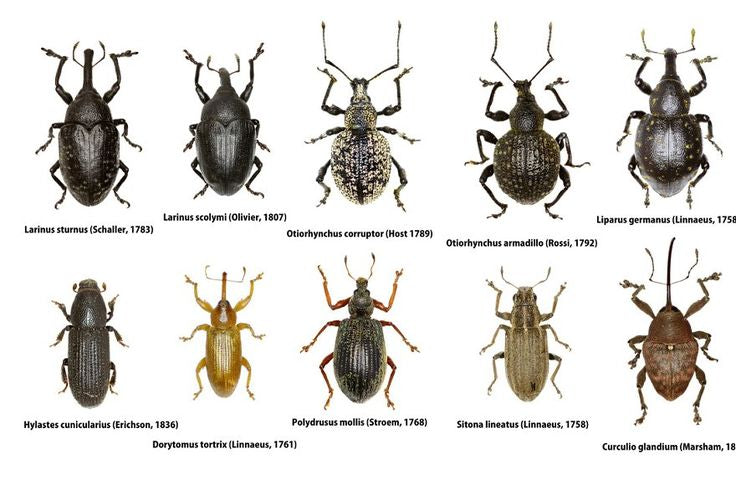
The Wonderful World of Weevils: Nature's Tiny Terrors
Weevils: you’ve probably heard the term before, maybe in the context of finding an unwelcome guest in your bag of rice. But there’s so much more to these tiny beetles than being pantry pests. With over 60,000 species worldwide, weevils are a diverse and intriguing group of insects that are worth getting to know.
Meet the Weevils
Weevils belong to the family Curculionidae, and they are easily recognizable by their distinctive snouts, which they use to bore into plants and seeds. These little guys come in a variety of shapes and sizes, from the tiny grain weevil to the larger palm weevil. Despite their size, they play a significant role in the ecosystem, both as pests and as important players in the food web.
Weevil Diversity
One of the most fascinating things about weevils is their diversity. They inhabit a wide range of environments, from tropical rainforests to temperate woodlands. Some, like the boll weevil, have a notorious reputation for wreaking havoc on crops. The boll weevil, in particular, was a significant pest for cotton farmers in the United States, causing widespread economic damage in the early 20th century.
On the flip side, some weevils are actually beneficial. Certain species are used in biological control to manage invasive plants. For instance, the weevil *Rhinocyllus conicus* has been introduced in some areas to control the spread of thistles.
Weevils in Your Home
Let’s address the elephant in the room—or should I say, the weevil in the pantry? Common pantry pests like the rice weevil and the granary weevil can be a real nuisance. These little invaders find their way into stored grains and dry goods, munching away and laying eggs. If you’ve ever opened a bag of flour only to find it teeming with tiny beetles, you’ve met these unwelcome visitors.
But don’t despair! There are ways to prevent and manage weevil infestations. Keeping your pantry clean, storing grains in airtight containers, and regularly checking for signs of weevils can help keep these pests at bay. If you do find an infestation, it’s best to discard the affected food and thoroughly clean the storage area.
The Ecological Role of Weevils
Beyond our homes and farms, weevils play a crucial role in nature. They help decompose plant material, recycle nutrients, and provide food for a variety of predators, including birds and small mammals. Their presence in the ecosystem is a testament to the complex web of life where even the smallest creatures have a big impact.
Fascinating Weevil Facts
- **Old as Time:** Weevils have been around for millions of years, with fossils dating back to the times of the dinosaurs.
- **Smart Eaters:** Some weevils are highly specialized in their diet, feeding on a single type of plant or part of a plant.
- **Good Swimmers:** Some species, like the rice weevil, can survive underwater for days, allowing them to endure flooding.
So, the next time you encounter a weevil, whether it’s in your pantry or out in the wild, take a moment to appreciate these remarkable beetles. They might be small, but their impact on the world around us is anything but tiny. From agricultural nemeses to ecological helpers, weevils are a testament to the incredible diversity and adaptability of life on Earth.
---
Weevils may not be the most glamorous of insects, but they sure are fascinating. Whether they’re pests or partners, these tiny beetles have stories to tell and lessons to teach. So, let’s give a little nod to the weevils—the tiny terrors of nature that remind us of the intricate connections within our ecosystem.
